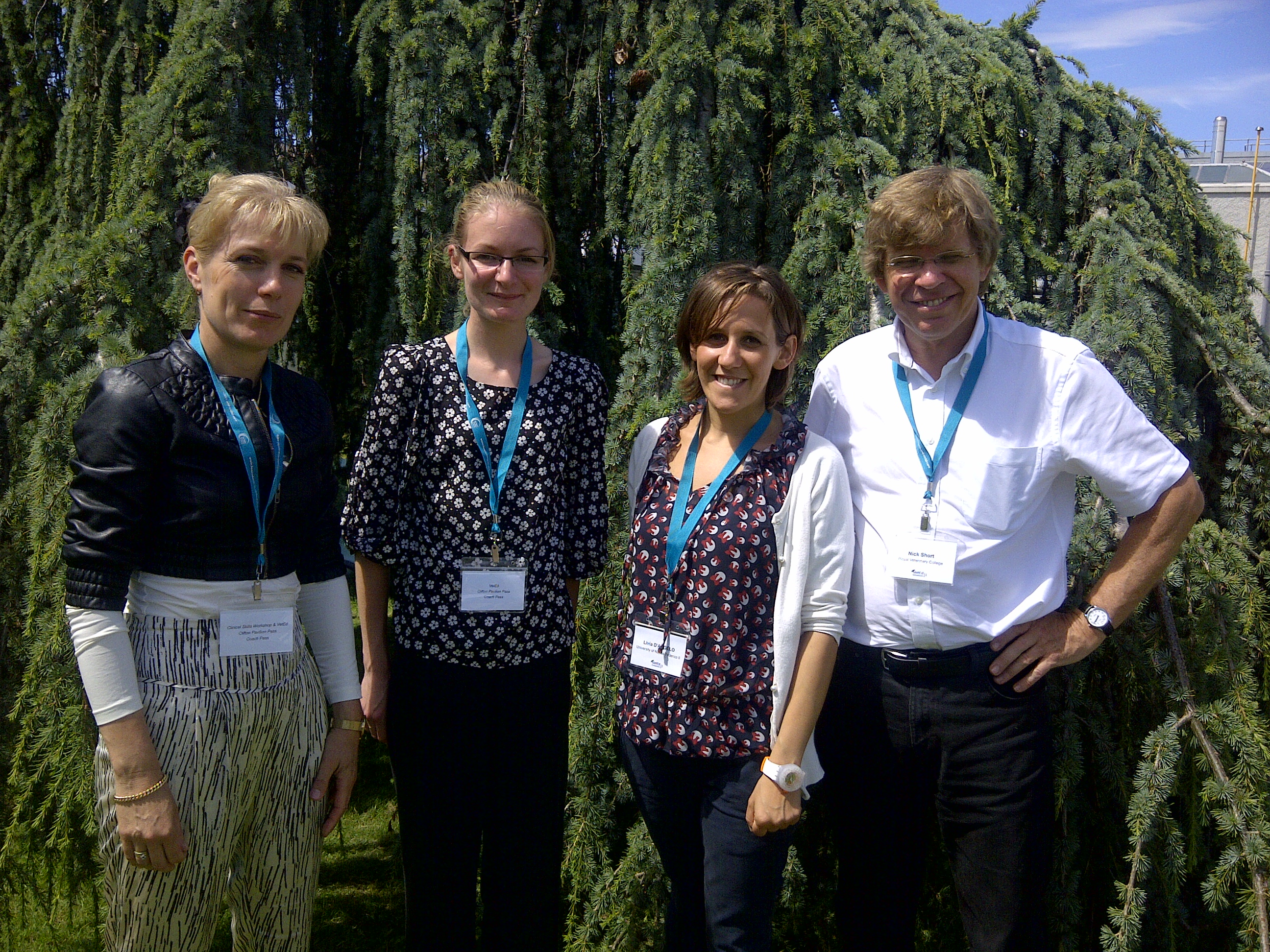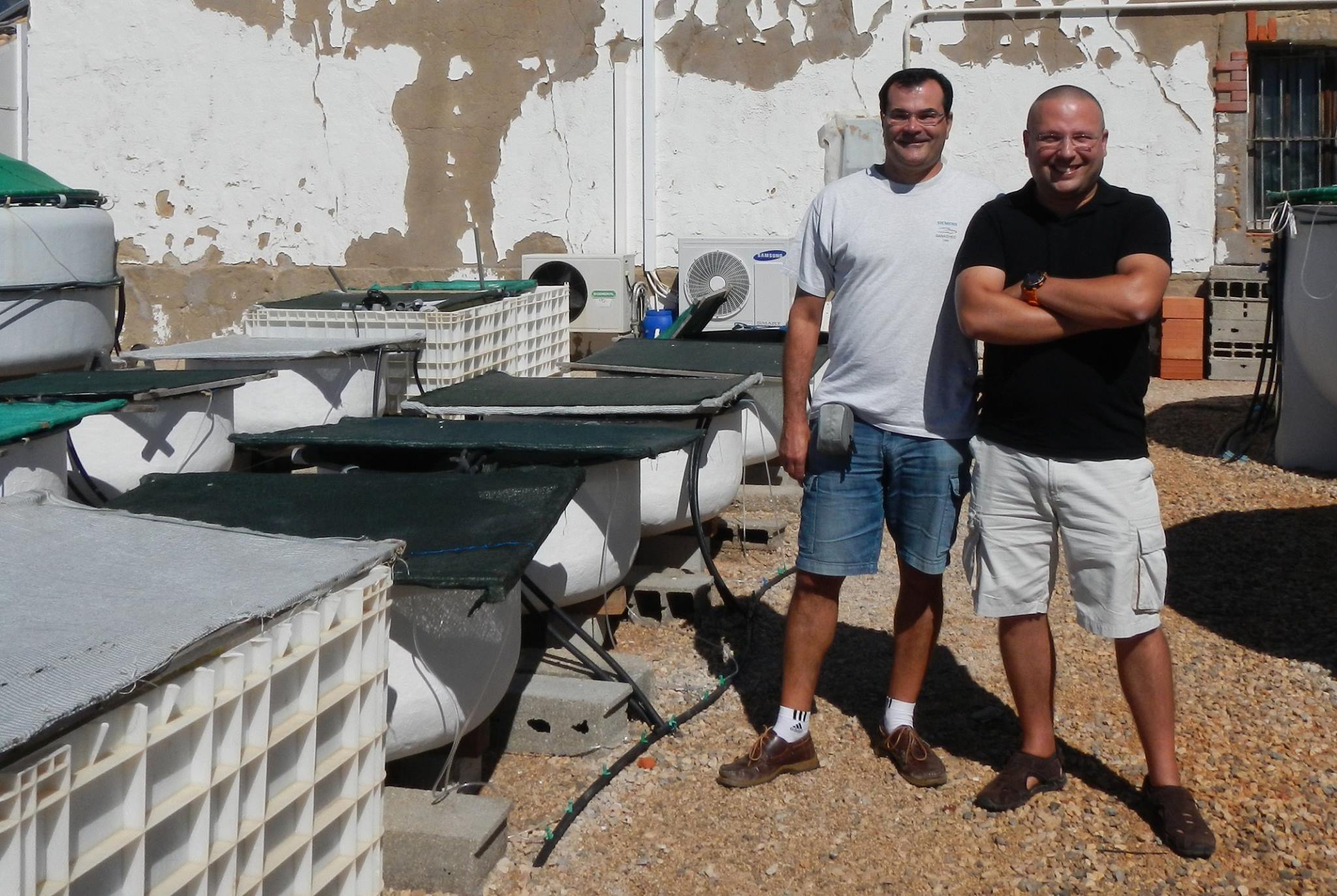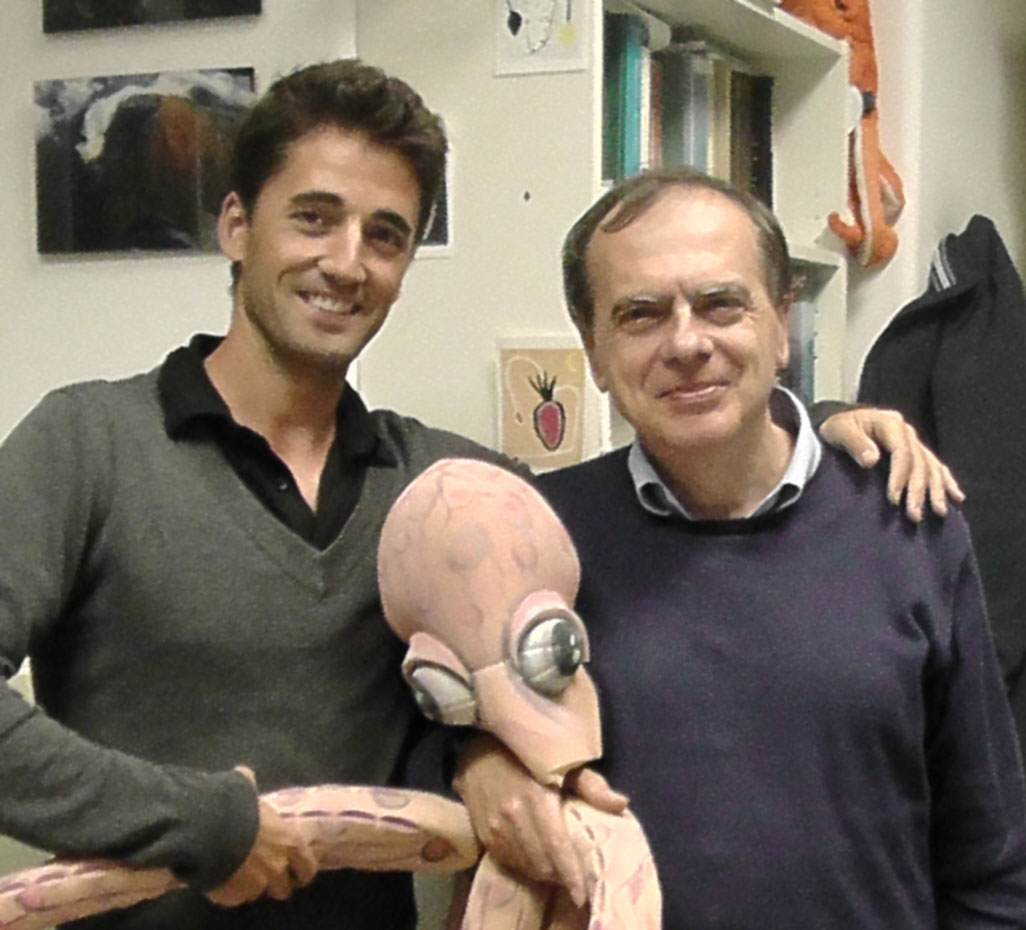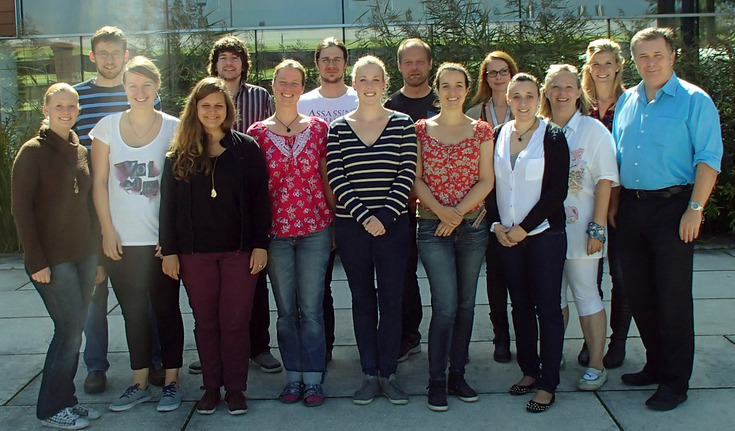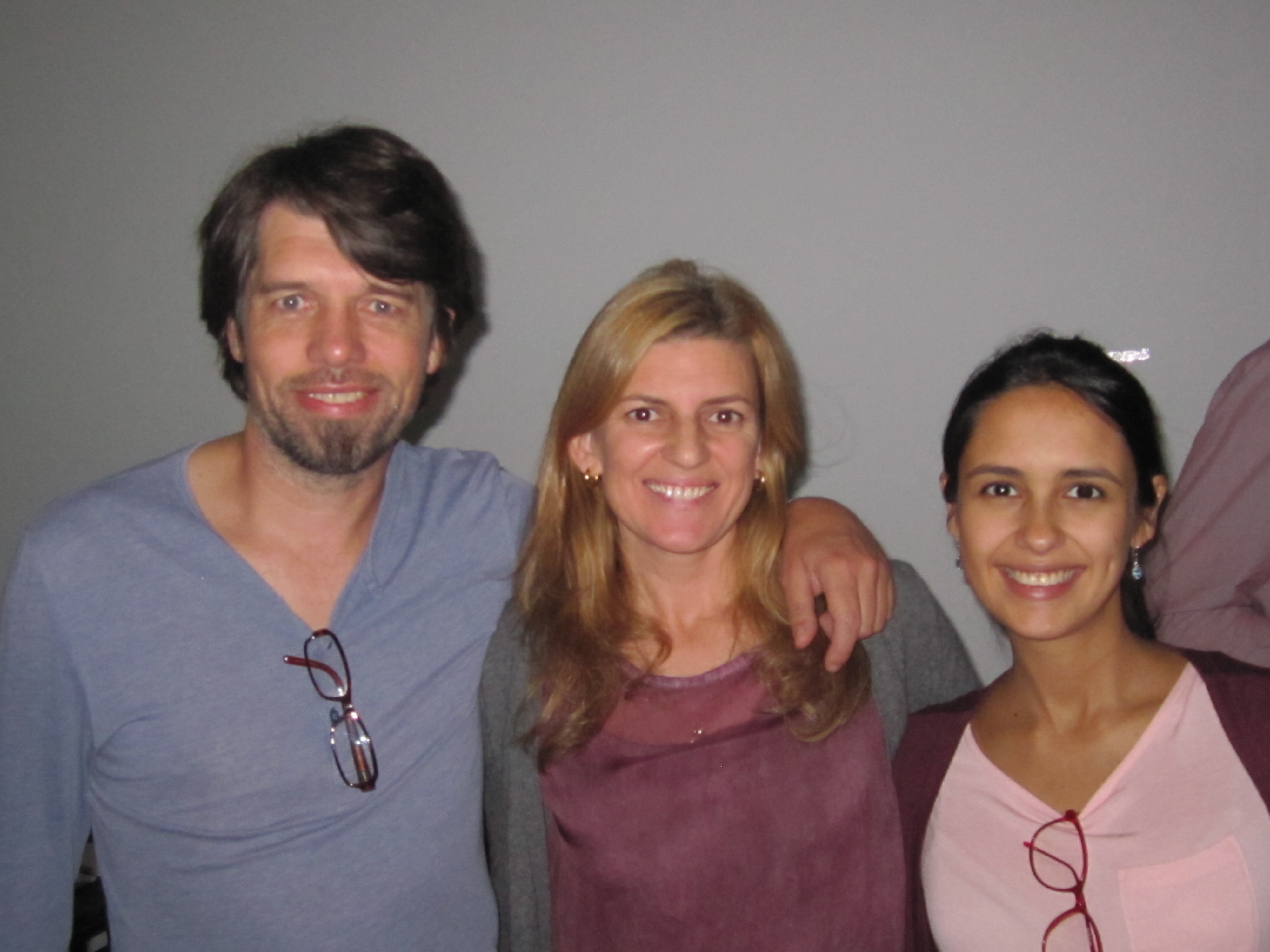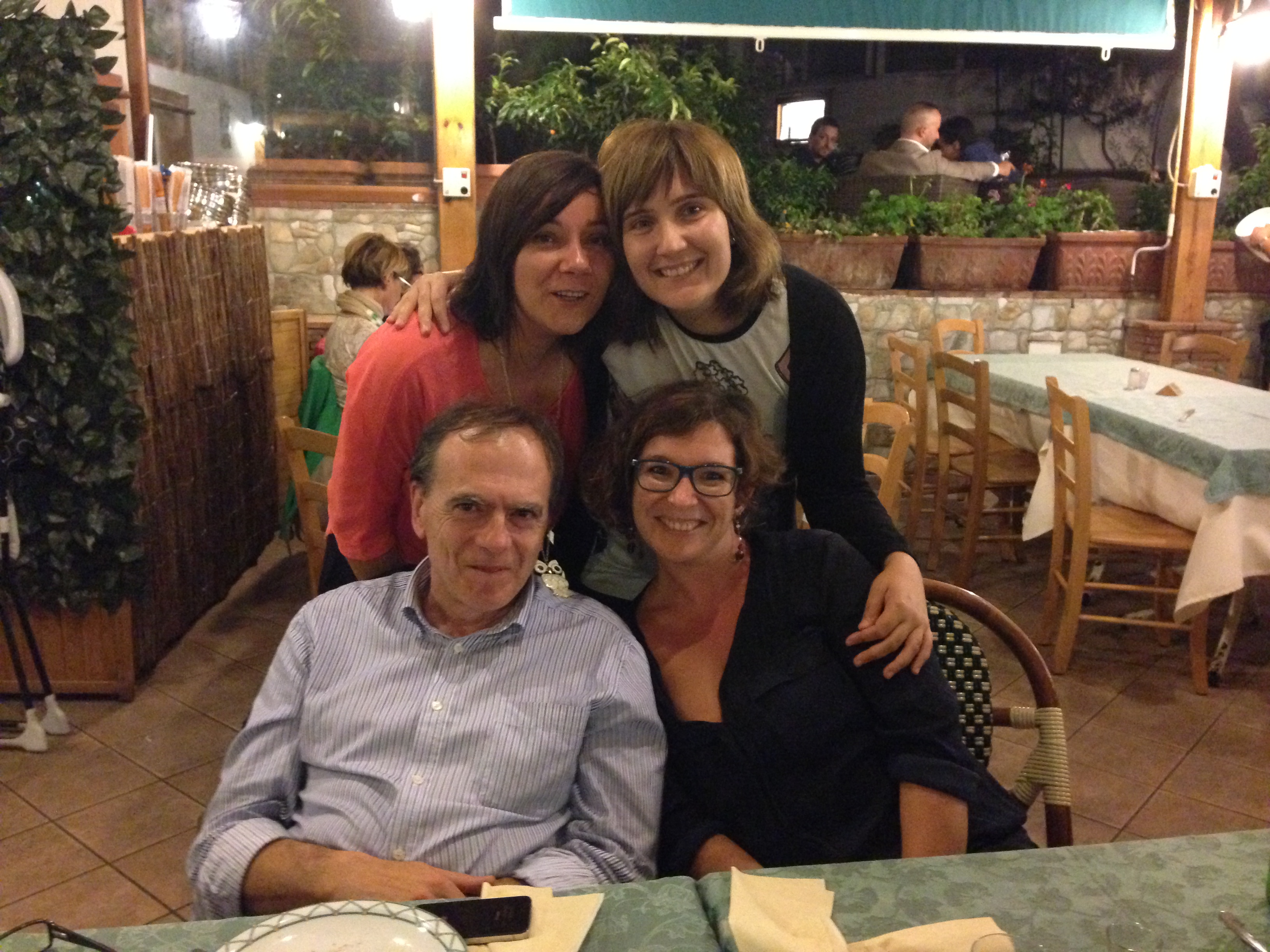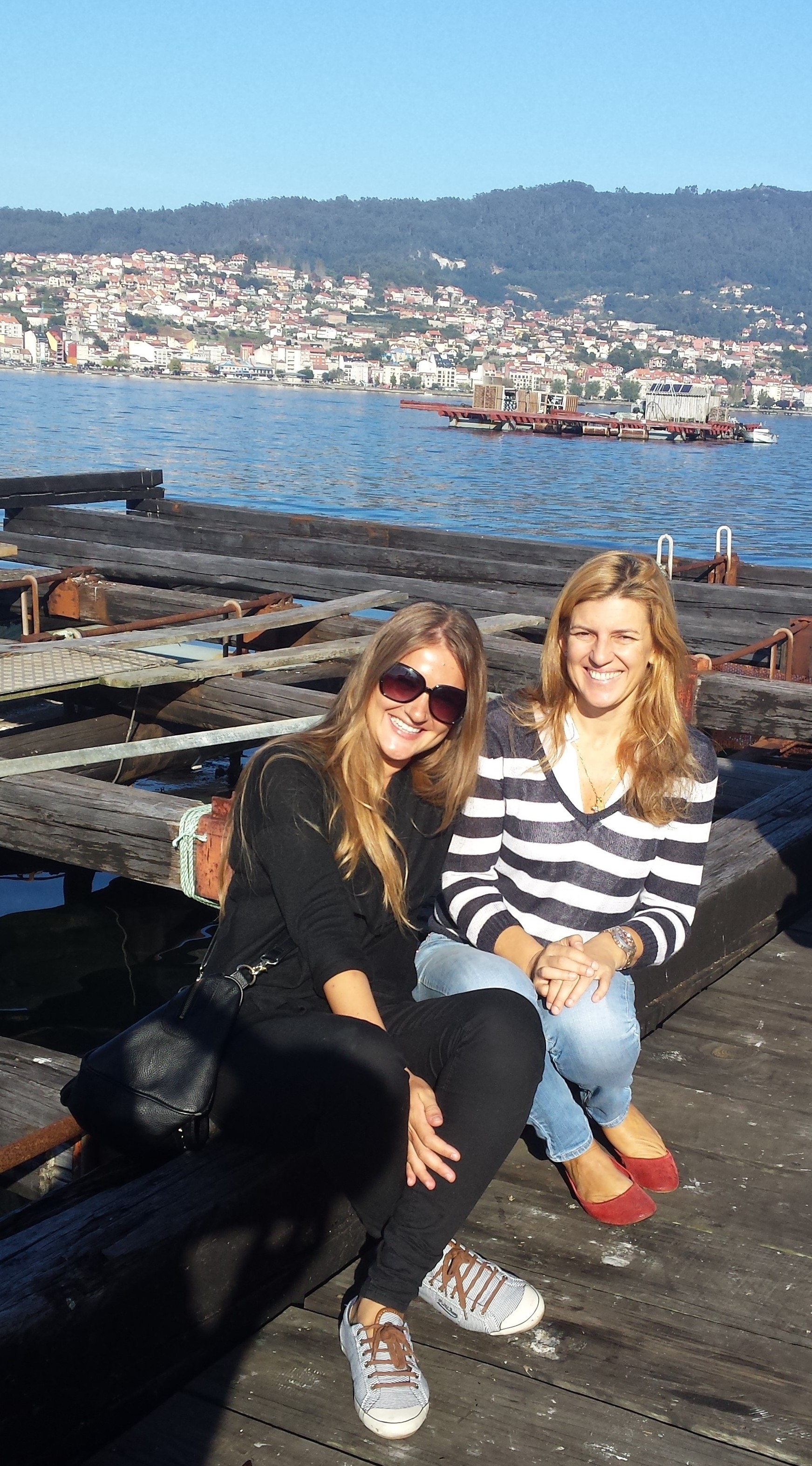Approved STSMs 2014
Approved STSMs 2014
First Year STSMs
For the First Grant Year, CephsInAction has been able to grant 8 STSMs. 
We received 11 applications and we consider it a very good result for the first year.
The selection was operated according to the following criteria:
For each of the considered topics (i.e.: proposal clarity, feasibility, planning and expected outputs) was a score from 1 to 6.
Each member of the FA1301 STSM Evaluation Committee (COST Action Chair, STSM leader, STSM vice-leader) scored each proposal independently. The Chair collated the outcome of the independent evaluations, and communicated the final scoring after verifying the fulfillment of requisites and possible deviation from the expected budget of each proposal to the Grant Holder.
The proposals have been ranked and those with the highest scores have been financed, subject to the duration of the STSM applications and the available budget.
Short 2014 STSM Summary Reports
Dr. Livia D’Angelo: e-Cephalopods: teaching and learning
Show More/Less
Period from 07/07/2014 to 12/07/2014
Full name: Livia D’Angelo
Home Institution: Department of Veterinary Medicine and Animal Productions, University of Naples Federico II (IT)
Host Institution: e-Media Unit, Royal Veterinary College, London (UK)
STSM Summary Report
Research Interest: Development of skills to train people at different levels of expertise in the use of cephalopods for research, training, education and display.
Summary of research completed during STSM: The STSM provided me with the unique opportunity to develop technological capabilities to support collaborative learning and working, by employing, video, animation, instructional design and web development. Several meetings have taken place during the 5 days of the STSM to discuss and present how develop and support Virtual Learning Environment. Steps for creating the learning environment are: selection, collection and storage of useful materials for demonstrations and training; subdivision of the material according to the final scope; choices and use of appropriate softwares to each specific purpose; demonstration of how construct a web platform to share all documents, videos, audio through Echo360, valuable tool for active and interactive learning platform.
Synthesis and application of research: Within the intense acitivities of 5 days STSM I have had an overview of potential Web platforms and databases to be used for disseminate knowledge achieved by the COST ACTION FA1301. The tools I was introduced to will be of great help and support in the organization of educational material and training settings to enable dissemination of the knowledge gained among end users and veterinarians, young scientists and technicians, and all personnel involved with cephalopods for research, training, education and display.
Wider benefit of the STSM to the participant: An obvious advantage of knowing tools for e-learning is to garantee expanded access and resources to the advanced knowledge in the field of cephalopods. In particular, the STSM gave me the opportunity to learn of manage with the educational material on cephalopods, for future integration into veterinary schools.
Key output: Realization of Virtual Learning
Dr. Pedro Domingues: Weaning cuttlefish hatchlings on artificial diets: establishing the correct timeframe
Show More/Less
Period from 07/07/2014 to 25/08/2014
Full name: Pedro Miguel Rodrigues dos Santos Domingues
Home Institution: Instituto Español de Oceanografía – Centro Oceanográfico de Vigo. Spain.
Host Institution: Universidade do Algarve, Portugal
STSM Summary Report
Research Interest: Development and use of prepared dry pellets to achieve the weaning of juvenile cuttlefish from live or dead natural diets to pellets.
Summary of research completed during STSM: Two experiments were performed. The first was performed with 25DAH (days after hatching) cuttlefish and tested the weaning of two diets against a control on frozen grass shrimp (which is the common weaning protocol). The second was performed on 2-3 month old cuttlefish and tested the use of the same diets. In experiments, growth, survival, food ingestion were assessed on a weekly basis. In addition, to verify the acceptance of food by cuttlefish, video recordings were performed at time of feeding in all experimental tanks. Additionally, a preparatory work on the effects of density on the acceptance of the same diet in 1 DAH cuttlefish was tested. In here, only acceptance of foods was registered.
The data generated from the experiments is still being assessed. Nonetheless, in the first experiment, the diets were accepted to some extent. A massive mortality was registered after 8-9 days of weaning. Clearly, the diets for this life stage need improvement regarding its weight. This parameter influences the mobility of the pellets inside the tanks, which is a required condition for being attractant to cuttlefish and promote higher ingestion rates.
In the second experiment, cuttlefish took 3 days to accept both formulations and about one week until all animals ingested the diets. The acceptance was, therefore, very good, with some cuttlefish grabbing more than one pellet at once. This clearly is a good results, since until now there is no record on such good acceptance of prepared diets. Furthermore, this is the first time that the acceptance extruded diets by cuttlefish has been demonstrated. Growth, mortality and ingestion and conversion rates are still being analysed.
As for the preparatory work, despite we did not video recorded any ingestion by 1 DAH cuttlefish, animals lasted for 11 days before mortality reached and peak. Since, it is know that internal reserves are exhausted after 5 days (Sykes et al. 2004), it is likely that cuttlefish ingested the artificial diets to some extent.
Only results from the second experiment will be sent for publication. After these results, Dr. Domingues will continue collaborating with Dr. Sykes in the development of artificial diets for both species.
Synthesis and application of research: The purpose of the STSM was for Dr. Domingues to acquire extended capacities on the development of artificial diets for Octopus vulgaris, based on the most recent knowledge of diet development in Sepia officinalis. Therefore, the experiments were performed in the latter species and Dr. Domingues will establish a parallelism of the results obtained at CCMar (Faro, Portugal) to his research on O. vulgaris at the IEO, in Vigo (Spain).
Wider benefit of the STSM to the participant: The COST action allowed Dr. Pedro Domingues to update on the state of the art of the development of artificial diets for the cuttlefish, and discuss the modification of these diets in composition, form and weight, in order to make them more attractive for the cuttlefish. In addition, composition, size and form of a similar diet for Octopus vulgaris paralarvae was discussed to experiment its effect on growth and survival of O. vulgaris paralarvae.
Key output: Acceptance of dry pellets for the first time by 30 days old cuttlefish Juveniles
Acceptance of dry pellets for the first time by 2 to 3 months old cuttlefish Juveniles
Bases for the development and elaboration of dry pellets for vulgaris paralarvae were established.
Dr. Juan Estefanell: Growth of Octopus vulgaris under 3 levels of confinement: effect on corticosterone levels
Show More/Less
Period from 27/09/2014 to 10/11/2014
Full name: Dr. Juan Estefanell
Home Institution: Grupo Investigación Acuicultura. University of Las Palmas Gran Canaria. Gran Canaria, Canary Islands (Spain)
Host Institution: Stazione Zoologica Anton Dohrn, Naples (Italy)
STSM Summary Report
Research Interest: Cephalopod biology, in particular nutrition, and its application in aquaculture.
Summary of research completed during STSM: The cephalopods have been recently included in the new EU Directive 2010/63/EU on animal welfare. Several cephalopod species have long been studied under controlled conditions. However, little information is available regarding the effect of different rearing systems on stress and welfare in cephalopods. The present study tested the effect of three rearing systems on growth, behavior and several immune parameters in Octopus vulgaris. The rearing systems were individual 60 and 120 L tanks, commonly used in research facilities; and social conditions, normally used in the aquaculture industry. A total of 24 specimens (N = 8 per rearing system, 325 ± 90 g) were fed for 49 days on a mixed diet (crab-fish). Growth, feeding and conversion rates were assessed during the study. Several behavioral and biological parameters have been measured daily. Faeces and water (from the outflow) were collected in order to check non invasive methods for measuring stress biomarkers. The social rearing system induced highest growth than the individual ones. Stress hormones and other immune related parameters sampled during the study are still being processed and will help to clarify the effect of these rearing systems on O. vulgaris welfare.
Synthesis and application of research: The results of this study will provide information regarding the effect of common rearing systems on octopus welfare. To date, most research carried out on cephalopods is performed on small individual tanks, while the development of cephalopods farming is very likely to occur in sea cages under social conditions. In this study we evaluated the biological performance, several immune parameters at molecular level and also the associated behavior in O. vulgaris reared under 3 systems, in order to establish the adequacy of common rearing or maintenance systems for this species.
Wider benefit of the STSM to the participant: The stay in Naples gave me the opportunity to work in a lab where cephalopods are the main target, working together with a very well coordinated and multidisciplinary team of researchers. Every break for coffee was an opportunity to learn and share information about different topics related to cephalopod’s biology. In particular, I was trained to measure several behavioral indices that provide plenty of useful information in a non invasive way. Also, I learned protocols for anesthesia, sacrificing, haemolymph sampling and dissection of nervous system.
Key output: The results of this STSM will be published in congresses and peer reviewed magazines as soon as possible
Dr. Raquel Fernandez Gago: Histology and 3D characterization of the digestive system of Octopus vulgaris at different stages of development
Show More/Less
Period from 18/08/2014 to 16/11/2014
Full name: Raquel Fernandez Gago
Home Institution: Universidad de Vigo, Galicia
Host Institution: Biozentrum der LMU universität, München
STSM Summary Report
Research Interest: Development of the Octopus vulgaris digestive system
Summary of research completed during STSM: The study realized in Munich presents the first vision of the digestive system of the Octopus vulgaris paralarvae. These allow us to understand the different structures that it is presenting when this born. The development of the most important structures of the digestive system, from hatching to one month of life, will help us to recognize the important changes in these structures. For this study we have performed for the histological processing of 4 paralarvae from hatching to 20 days of life. Through the use semithin serial section and the informatics process of this we have reconstructed the 3D modeling of the paralarvae. These process allow us to know is the all the important structures are fully development when the paralarvae born. Furthermore we can also know the development the yolk these first days of life. The 3D modeling of the different parts has shown us that the digestive system of the paralarvae is similar than the adult of octopus. This is formed by oral mass, oesophagus, stomach, caecum, intestine, anus and additional glands. In the first day paralarvae is possible to see the internal yolk. Such as we performed the reconstruction of different paralarvae with different age we can see that the volume of these structures is higher in the 20 days than in the first day. Furthermore the internal yolk is not visible since 5 days palarvae.
Synthesis and application of research: This study lets us know the state of development of the digestive system paralarvae the first days of life. As is known many marine species lack a complete digestive system at birth. For this reason it is interesting to a greater understanding of the biology of this species these early days. Furthermore processes like internal yolk absorption, still present in the paralarvae when born, are observed. This method has allowed us to establish a starting point for a detailed study of the digestive system in order to improve the culture at this stage. Total absorption of the yolk is a key point in aquaculture of cephalopods. This establishes the starting point of a protein metabolism, present in adults.
Wider benefit of the STSM to the participant: The stay in Munich has allowed me to learn the standard processing of histological samples for semi thin sections. As well as the modification of these techniques according to the samples processed. I also learned to make the different processors for animals 3D modeling. From obtaining, processing of the samples, realization of serial semithin sections and staining the cuts. Photographic processed of the cuts for their posterior used in the Amira program. Use Amira program to 3D modelling from images processed. In Munich I improved my English and the oral exposition in this language of our results.
Key output: Development, Octopus vulgaris, digestive system, paralarvae.
Dr. Camino Gestal: Identification and cell location of the expression of specific immune-related genes in the common octopus Octopus vulgaris using immunohistochemical and RNA in situ hybridization (ISH) techniques
Show More/Less
Period from 10/11/2014 to 21/11/2014
Full name: Dr. Camino Gestal
Home Institution: Instituto de Investigaciones Marinas. CSIC, Spain
Host Institution: Department of Integrative Zoology. University of Vienna, Austria
STSM Summary Report
Research Interest: Pathology and immune response in cephalopods. Disease diagnosis. Host-pathogen interaction. Molecular bases of the immune response and resistance to pathogens.
Summary of research completed during STSM: Immunohistochemical analysis performed at confocal laser scanning microscopy showed that Peroxirredoxin (PRDX) is widely expressed in post-hatching octopus paralarvae, showing the specific fluorescence of the secondary antibody used (Alexa 568) after analysis with the selected lasers (405 diode, Argon and DPSS 561). No visible specific signal was observed in pre-hatching embryos. PRDX is an antioxidant protein with different functions, but mainly involved in the anti-oxidative system for protection against oxidative stress produced by host immune functions such as cytotoxic reactions, reactive oxygen species (produced when the organism is attached by pathogens or is exposed to adverse conditions). The specific fluorescent signal was observed in confocal microscopy mainly in the digestive tract, but we also observed some specific signal in brain, specifically in optic lobe. Concerning SERPIN, an inhibitor of serine proteases, we observed a possible specific fluorescence signal close up of the posterior sub-esophageal mass. We have to point out that the specific first antibodies used were obtained from Hybridoma Bank (DSHB). These antibodies were selected of those offered by the institution due to its potential involvement in immune response of common octopus following the previous results obtained in our RNA-seq library. However, there are preliminary results and should be confirmed after evaluation of different confirmatory test or experiments in order to check the specificity of the fluorescence obtained. The RNA In situ hybridization technique was successfully performed. We use a specific antisense FMRF probe offered by Prof. Wanninger and Dr. Wollesen. These abs are not involved in immune response, however, due to the difficulty to transport the probes from Vigo to Vienna preserving the RNA quality and stability, we decided to use specific probes constructed in the host institution, and perform the ISH technique using these probes. The idea was to learn the technique in order to be able to repeat the same protocol in Vigo using the specific constructed probes of immune related genes.
Synthesis and application of research: The location of the expression of specific genes in the target organs or cells of an individual by using specific immunohistochemical and in situ hybridization techniques is a useful tool to understand many important molecular processes. The upcoming data on immune related genes together with other yet existing data in common octopus Octopus vulgaris will help to the understanding of specific keys for the identification of immune-competent or resistant individuals, and thus will help to improve the reared, welfare and husbandry of this species.
Wider benefit of the STSM to the participant: During my stay in Vienna I gained insights into the development of immunohistochemical and ISH techniques applied to cephalopods. The equipment and the expertise of the host institution in the development of these techniques helped me think about future projects and collaborations.
Key output: Results of this project will be published in international peer review scientific journals specialized in the area of research.
Dr. Mirela Petrić: Octopus immune response at gene expression level
Show More/Less
Period from 28/07/2014 to 22/09/2014
Full name: Mirela Petrić
Home Institution: University of Split, Department of Marine Studies, Split, Croatia
Host Institution: Stazione Zoologica Anton Dohrn, Villa Comunale, 80121 Napoli, Italy
STSM Summary Report
Research Interest: Cephalopod immune response at gene expression level.
Summary of research completed during STSM: The cephalopod molluscs rely solely on innate immunity, and hemocytes are suggested to play a key role in the immune-system response to challenges (e.g. through phagocytosis, encapsulation, infiltration of pathogens). Studies of the cephalopod immune system have recently become of great importance due to increased interest for aquaculture, for the role of potential pathogens on the quality of the “sea-products” for human consumption and for increased concern about welfare for these species also in relation with the inclusion of this taxon – the sole among invertebrate animals – in the Directive 2010/63/EU on the protection of animals utilized for scientific purposes. Aim of this research was to investigate the elements of the cephalopod immune response at gene expression level by in vitro immuno-stimulation of Octopus vulgaris hemocytes. For this purpose, a preliminary set of in vitro assays based on hemocyte cell culture preparation was developed. Hemolymph cell suspension was plated with Squid Ringer’s Solution and kept at 18 °C prior immune stimulation with commercially available immunostimulants: LPS (Escherichia coli lipopolysaccharides) as bacterial imitator, Poly I:C (polyinosinic-polycytidylic acid sodium salt) as viral imitator and zymosan, a yeast cell extract eliciting fungal type infection response. As control, hemocytes were kept under the same conditions as the immunostimulated ones. Immunostimulation was accomplished for four different time-frames: 1, 4, 24 and 48 hours. At the end of each time-point hemolymph suspension was collected and centrifuged following pellet resuspension in TriReagent. Total RNA was extracted from hemocytes following manufacturer’s protocol (InVitrogen) and RNA samples were retrotranscripted into cDNA which was utilized as template for PCR and RT-qPCR analyses. In order to analyze expression levels of specific GOI (gene of interest: immune-related genes and genes associated to the antioxidant system, stress and detoxification), a panel of putative reference genes was selected. In general, for all the treatments (Poly I:C, LPS and Zymosan) as well as the time points (1, 4, 24 and 48 h) the majority of of investigated antioxidant genes were up-regulated after 1 hour and 4 hours post stimulation, and the majority of the investigated immune genes appeared up-regulated only after 24 or 48 hours post-stimulation.
Synthesis and application of research: A preliminary set of in vitro assays based on hemocyte cell culture preparation was developed, thus attaining valuable data using non-invasive experiments on live animals. Aim of this research was to investigate the elements of the Octopus vulgaris immune response at gene expression level by in vitro immuno-stimulation of hemocytes. The gene expression analysis of the immune-related genes and genes associated to the antioxidant system, stress and detoxification was examined. Experiments showed that in the presence of viral, bacterial and fungal imitators, octopus hemocytes express defense mechanism-response that firstly induce activation of stress and detoxification related genes, and then activate immune-related genes.
Wider benefit of the STSM to the participant: The primary purpose of this STSM was to learn approaches and techniques to be applied to explore changes in gene expression in relation with immune responses of cephalopods, namely the common octopus, Octopus vulgaris. This was great opportunity for me to learn how to process hemocytes to obtain RNA for subsequent quantitative analyses of gene expression which was done by highly sensitive analysis technique, such as Real time qPCR. I also gained a lot of knowledge on working with cell cultures, like culture preparation as well as determination of cell number and cell viability. I hope to have thus contributed to the exploration of alternative methods and cell culture approaches to be applied in studies of fundamental and applied biology where cephalopods can continue to greatly contribute.
Key output: A scientific publication of the work carried out is planned to be submitted to a peer reviewed scientific journal.
Dr. Perla Tedesco: Ultrastructural and molecular characterization of Aggregata spp. from Central Mediterranean
Show More/Less
Period from 15/09/2014 to 17/10/2014
Full name: Perla Tedesco
Home Institution: Università del Salento, Dipartimento di Scienze e Tecnologie Biologiche ed Ambientali (DiSTeBA), Lecce, Italy
Host Institution: Instituto de Investigaciones Marinas, Consejo Superior de Investigaciones cientificas (IIM, CSIC), Vigo, Spain
STSM Summary Report
Research Interest: Ecology of marine parasites, with special emphasis on parasite life cycle. Effect of parasites and pathogens on marine populations.
Summary of research completed during STSM: The work focused on ultrastructural and molecular characterization of protozoan parasites of the genus Aggregata. The taxon is reported to parasitize cephalopod species and to be responsible of severe pathologies, which are mostly evident in cultured cephalopods. Such diseases can sometimes lead to mortality of affected individuals. In the Central Mediterranean the parasite is known to occur with high prevalence, however its taxonomic status in this area is still under debate. Specimens of the common octopus Octopus vulgaris were obtained from two localities of Central Mediterranean, i.e. Ionian sea and Tyrrhenian sea (Southern Italy). Only freshly dead animals from daily catches from local fisheries were utilized. Samples were dissected and examined under light microscopy to detect and estimate the presence of cysts of Aggregata sp. in the gut. Infected tissues from positive octopuses were preserved for subsequent analyses. Isolation and purification of the parasite were carried out following the method described in Gestal et al. (Iberus, 17: 115-121, 1999). Genomic DNA was extracted from Aggregata sporocysts. 18S rRNA gene of the parasite was amplified by PCR using specific primers. Samples for Transmission Electron Microscopy (TEM) were treated using standardized protocols specifically designed for the processing of Aggregata spp. samples and available at the host institution. Histological preparations obtained from samples of infected oesphagus, crop, caecum, intestine and mantle of O. vulgaris showed the presence of both gamogonic and sporogonic stages of Aggregata sp. and allowed the use of a semiquantitative method to compare the intensity of infection per each sampled locality. Information from histology was integrated with the analysis of parasite ultrastructure by TEM, which allowed the observation of important taxonomic features to distinguish between different species of Aggregata. Results obtained from the sequencing of PCR products are currently being finalized.
Synthesis and application of research: Information about the presence and distribution of Aggregata spp., including information about host range and species specificity, can provide useful knowledge for understanding the epidemiology of the parasite and allow to develop recommendation on welfare and husbandry practices for cultured and laboratory reared cephalopods.
Wider benefit of the STSM to the participant: The STSM gave me the opportunity to apply the most advanced approaches (i.e. ultrastructural analysis and molecular biology) available for the study of cephalopod protozoan parasites and to get specific skills and expertise not available at my home institution. The study of parasitic relationships and their effects on the host requires an integration of many different expertizes. For this reason my background in ecology greatly benefited from integrating ecological studies with the application of specific diagnostic techniques.
Key output: The aim of the STSM was to acquire specific skills and expertise for the characterization of protozoan parasites of cephalopods. Final results of the present work will be published in peer review journals specialized in the area of research.
Dr. Tim Wollesen: Expression of Hox genes in Octopus vulgaris
Show More/Less
Period from 30/09/2014 to 14/10/2014
Full name: Tim Wollesen
Home Institution: University of Vienna, Department of Integrative Zoology
Host Institution: Department of Biotechnology and Aquaculture, Aquatic Molecular Pathobiology Group, Vigo, Spain
STSM Summary Report
Research Interest: I am interested in molluscan body plan evolution with special focus on cephalopods.
Summary of research completed during STSM: During my STSM in the lab of Dr. Camino Gestal I collected embryos of Octopus vulgaris to perform Hox gene expression analyses back in Vienna. Hox genes pattern metazoan body plans during early development. In bilaterians these genes pattern the anterior-posterior body axis, however in mollusks they have been also recruited in other processes. Among mollusks only one decapod cephalopod and three gastropods have been investigated so far and the vast majority of molluscan representatives have been neglected. By studying Hox gene expression during development the evolutionary origin of the cephalopod arms might be unraveled. In the decapod squid Euprymna scolopes Hox genes are expressed in a distinct combination in all eight arms and both tentacles. Gene expression patterns of an octopod may allow at inferring arm homologies. In addition, other organs such as the funnel express a distinct combination of Hox genes and this project may shed light on the evolution from a monoplacophoran-like cephalopod ancestor to recent cephalopods.
In particular in Spain, O. vulgaris is of great commercial value and hence its life cycle is important. Paralarvae feed on crustaceans and survive in captivity for 20-30 days after hatching. Then they die and until now, it is impossible to close the life cycle. Therefore, fishermen in Vigo catch octopuses round the year with exception of a period during spring when females brood. Caught octopuses must have a minimum weight of 1kg and are kept in suspended galvanized cages on floating rafts which were originally used for mussel production in the Ria of Vigo. Adult octopuses are fed mainly fish until they weigh about 2.5kg and brood. During my STSM I collected embryos from two of these brooding females. Unfortunately, the earliest developmental stages were stage X (sensu Naef) or older and no embryos that exhibit early organ system formation were collected. The advanced development of these embryos was probably due to the higher temperature during autumn. The earliest embryos collected already exhibit anlagen of all major organ systems (stage X) while the oldest developmental stages are hatchlings with no external yolk sac (stage XX). 10-20 embryos per stage were preserved in RNAlater for subsequent RNAseq and cloning of genes of interest. Several hundred individuals of all above-mentioned developmental stages were fixed for in situ hybridization experiments and stored with the RNAlater samples at -20°C. A transcriptome of octopod blood cells of Dr. Gestal was screened for Hox gene sequences but putative Hox gene sequences were too short for a proper identification.
Synthesis and application of research: Together with the specimens collected during my STSM and a planned future collection in spring 2015 which will cover earlier developmental stages I will have enough specimens to start my project on Hox gene expression in Octopus vulgaris. Together with yet existing data and upcoming data on Hox gene expression in other mollusks and bilaterians carried out in our working group in Vienna, these data will shed light on how the diverse molluscan body plans evolved.
Wider benefit of the STSM to the participant: During my stay in Vigo I gained insights into how Octopus vulgaris is kept and how it reproduces in captivity. I also learned about difficulties encountered during the culture of this species, in particular its life cycle. I met various researchers who are among others rearing Octopus vulgaris and who are interested in the life cycle of the latter species. These experiences helped me to think about future projects and collaborations. In order to continue with my project, Dr. Gestal will try to fertilize females in an aquarium in her wet lab next spring. This can be achieved by gathering four to five males and females in a single big aquarium with food ad libitum. With the right parameters of light, salinity, and temperature it is possible to keep these octopuses for 2-3 months. This will increase the chance to obtain brooding females and hence the early developmental stages which I still need for my project.
Key output: Results of this project will be published in internationally renowned scientific journals or in popular scientific journals.
| M | T | W | T | F | S | S |
|---|---|---|---|---|---|---|
| 1 | 2 | 3 | 4 | 5 | 6 | 7 |
| 8 | 9 | 10 | 11 | 12 | 13 | 14 |
| 15 | 16 | 17 | 18 | 19 | 20 | 21 |
| 22 | 23 | 24 | 25 | 26 | 27 | 28 |
| 29 | 30 | 31 | ||||
This website is supported by COST, European COoperation in Science and Technology

